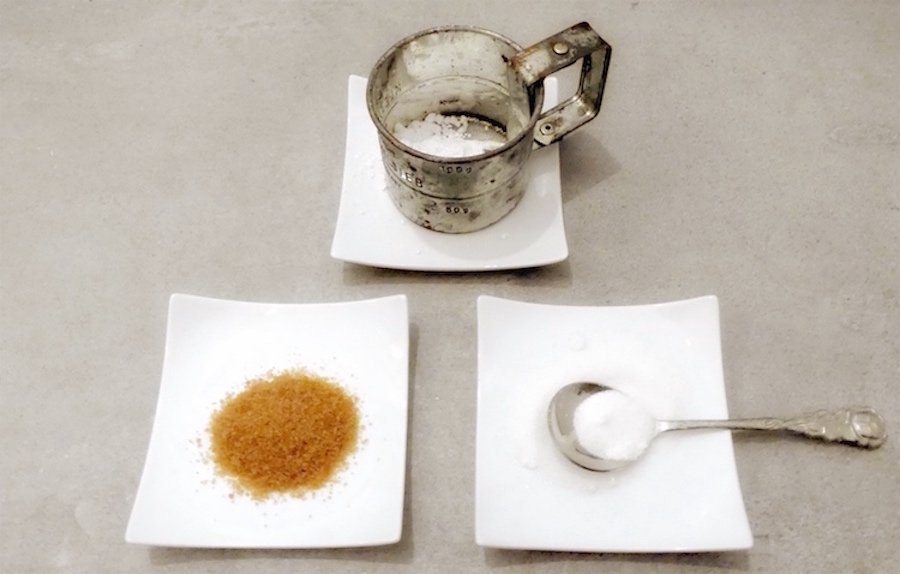How much free sugar a day is acceptable if you want to keep fit and healthy? I am currently dealing with this question quite intensively for healthandthecity.de. Because I noticed a strange contradiction: When I read blogs or look around on Instagram and Pinterest, the world seems full of women who swear by the low carb. Or they try to get by without sugar as much as possible. On the other hand, a new scientific publication on the gender-specific risk of diabetes finds: Women, in particular, have a major problem keeping their sugar consumption under control. They are prone to frustrating eating – which I unfortunately also know personally…. But apparently, women also drink high-sugar beverages more often than men.
They are really making a mistake in their diet. Because for no other form of sugar intake has it been so well documented that it can make you sick and fat as for “drinking sugar”. So for lemonade, cola, ready-made iced tea, energy drinks, juice spritzers, juices, and smoothies.
Table of Contents
The answer to the question of how much sugar a day is healthy has two parts:
- It’s a lot less sugar than most people can imagine. So little that many of us actually eat at least twice as much as recommended every day.
- Once you’ve gone above-recommended levels, it seems to matter what kind of sugar you eat—and in what form. The risk of gaining weight or developing diabetes, for example, depends at least in part on the packaging in which the sugar enters the body. Whether it’s fruit, cake, yogurt, ready meals, or chips. Sugary drinks play a particularly inglorious role in this.
Many women are unaware of their biggest sugar traps
Why don’t so many women know this? Even though you feel like you spend the whole day with your body, your figure and your eating habits?
My suspicion: Above all, fruit juices, spritzers and smoothies enjoy a healthy image. Finally, there is fruit in it. And sugar from fresh fruit can’t be a bad thing. With a smoothie, women mean treating themselves to an extra portion of health. I suspect a lot of women believe that. But unfortunately, it’s not true.
Free sugar is particularly tricky
According to the World Health Organization (WHO), when it comes to the question of how much sugar a day is healthy, the first thing that counts is the total amount of so-called free sugar. These are simple sugar molecules that the body does not first have to extract from more complex sugar molecules, the so-called polysaccharides, through complex metabolic processes. And that includes:
- Simple sugars added to food and drink: This is often white table sugar, a combination of glucose and fructose. Or it’s fructose, for example from fortified corn syrup. However, this is often not directly stated on the food packaging. The food companies camouflage free sugars on the ingredient list with a choice of names that is confusing for consumers. (You can find out more about this in the blog post: Without industrial sugar)
- Sugar found naturally in honey, syrup, fruit juices, juice concentrates, syrups and smoothies. This is often fructose, the fruit sugar. Here, too, the food companies are using all kinds of tricks. For example, a very well-known orange juice says: no added sugar (see photo) and if you then read the asterisk, you learn in a very complicated formulation that by law no sugar may be added to real juice. As you think about it, you almost inevitably forget to look up the really high levels of sugar per se in the juice (more on that below).
How much sugar a day? Under 10 percent of calories
The WHO advises reducing the daily intake of free sugar to below 10 percent of the total daily calorie intake. One gram of sugar contains 4 kilocalories of energy. A woman needs around 1900 to 2000 calories a day. 10 percent of that is 190 to 200 calories. Accordingly, one comes to the following answer to the question of how much (free) sugar per day is ok: a maximum of 50 grams. That’s about 10 teaspoons of sugar.
And by that, we mean all the free sugar you eat in a day. So not just the one that you shovel clearly into your coffee or bake in a cake. But also in sweet particles, chocolate, gummy bears and the well-hidden ones that you often don’t even know about.
Hide sugar in high amounts – 3 examples
To make the order of magnitude clear, here are 3 examples of hidden sugar:
- 1 serving of ketchup (20 grams) contains 4.5 grams of sugar, which is almost a teaspoon.
- 1 cup of fruit yogurt (200 grams) contains between 25 and 30 grams of sugar, i.e. 5 to 6 teaspoons.
- 1 serving of “honey mustard” salad dressing (50 ml) has 5.5 grams of sugar, i.e. a good teaspoon full.
From this you can see: that 50 grams is not much, because with the 3 examples above plus a coffee with sugar you already have your daily ration full without having eaten anything substantial.
To get an even better comparison, I went through my chocolate stash. How much sugar is in chocolate? Depending on the variety, I read there are 40 to 55 grams of sugar per bar.
The misjudged sugar bombs: juices and smoothies

Orange Juice: Looks healthier than it is
And now the sugar in drinks:
- 1 glass (200 ml) of cola contains 21 grams of sugar, i.e. 4 teaspoons.
- 1 glass of apple juice has 22 grams of sugar, so a good 4 teaspoons.
- 1 glass of orange juice contains 18 grams of sugar, so almost 4 teaspoons.
- Depending on the type, 1 glass of smoothie from the supermarket contains between 12 and 24 grams of sugar, i.e. between 2.5 and almost 5 teaspoons.
As you can see, juices and smoothies are just as big sugar bombs as cola! With a glass, we are moving in the sugar magnitude of half a bar of chocolate. Another bad thing is that compared to whole fruit, fruit juices lack fiber that at least partially offsets some of the unfavorable effects of sugar.
We eat twice as much sugar as recommended
On average, every German eats around 100 grams of free sugar a day, i.e. twice the WHO ration. Interesting in this context: How did the WHO actually come up with this amount of 50 grams or 10 percent of the daily energy of free sugar? This recommendation is based on an evaluation and assessment of existing studies worldwide that investigate the question of how much sugar per day is healthy. It turned out that those adults who hardly eat any free sugar weigh less on average than those who eat a lot of sugar. There is also a connection with the daily amount of sugar and the frequency of tooth decay.
It is fair to say that this limit is disputed among scientists. The WHO itself sees good reasons to recommend even less sugar: namely only 25 grams a day for women, i.e. 5 percent of the daily calorie intake. However, other organizations, including the German Society for Nutrition (DGE), consider the evidence to be insufficient to further reduce the currently recommended amount of sugar of 50 grams.
In addition, the DGE points out that the evidence that free sugar makes you fat and ill applies most clearly to sugar in beverages. This brings us back to the beginning: Sugary drinks, including juices and smoothies, are the plague.
How the free sugars can make you sick
But why actually? Here you have to distinguish between the free sugars glucose and fructose.
- Glucose gets into the cells quickly and directly. Because most cells in the organism need this sugar to generate energy and keep the metabolism running. In fact, too little glucose in the blood can lead to life-threatening hypoglycemia. That is why the body has several emergency processes to prevent hypoglycemia. The problem, however, is that if glucose arrives in the digestive tract in concentrated quantities – for example, because you have eaten half a bar of chocolate – the blood sugar level rises very quickly. This in turn causes a high release of insulin, which quickly causes blood sugar to drop again. And this rapid decline is giving a lot of people cravings. In other words: glucose is not very filling. The desire to eat remains, although the calorie requirement has long been covered. As we all know: If you constantly take in more calories than you burn, you gain weight.
- Fructose, on the other hand, cannot be used directly by most cells, it has a significantly less effect on blood sugar. The fructose is processed in the liver. If there is always too much of it in the organism, the entire fat and carbohydrate metabolism gets mixed up. Among other things, fat burning is hindered. At the same time, fructose is converted into fat deposits much faster than glucose. This increases the risk of fatty liver, obesity, diabetes, and high blood pressure. As if that were not enough, fructose blocks the feeling of satiety. So you run the risk of consuming more calories than you need.
Sugar-cutting tip for women
Let’s get back to the daily total of free sugars. It’s obvious: for weight and health, you should reduce the free sugar in your diet to recommended levels. The first step there, which is obviously particularly worthwhile for women in particular: less sugary drinks! Also no seemingly healthy ones, i.e. no juices, spritzers, or smoothies. A complete renunciation of sugar is neither necessary nor sensible. It can even lead to eating disorders, as you can find out in the article “Why living sugar-free is not for me”.
Sport can compensate for sugar risks
Finally, some really good news: People who exercise a lot usually have no problems with sugar. It doesn’t really matter to them in what form they absorb the sweetness. Your body can easily tolerate the free sugars, glucose, and fructose, and in quite high amounts. The reason is: exercise has an extremely positive influence on sugar metabolism and makes the body cells more sensitive to the effects of insulin.
So there is still an answer to the question: how much sugar a day is healthy? Namely: The more and more regularly you move, the more sugar you can treat yourself to. Whether in cakes, gummy bears, or juice. So have fun playing sports. For example, with our tips on how even a non-runner can learn to jog in 10 weeks.










